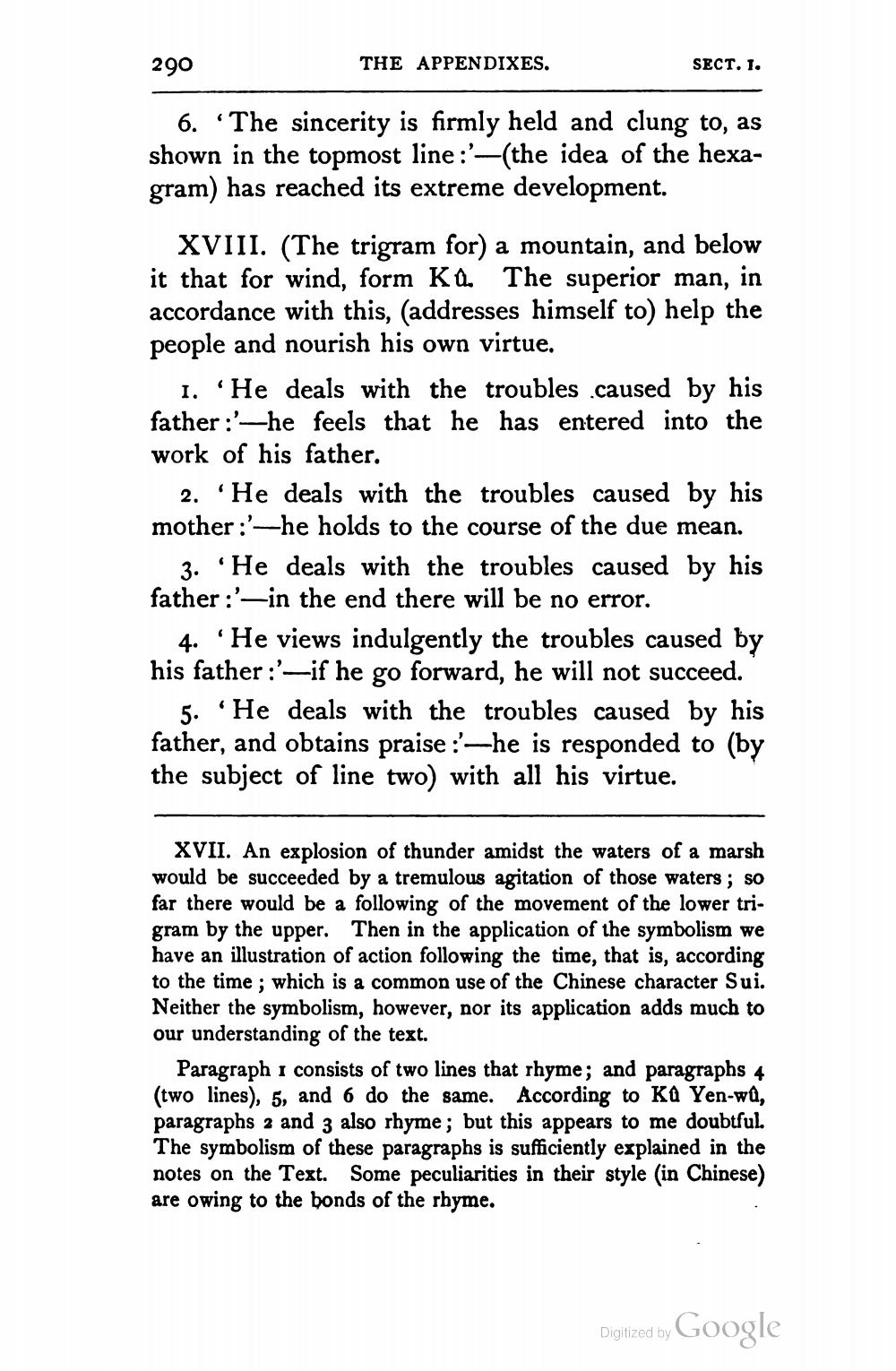________________
290
THE APPENDIXES.
SECT. 1.
6. The sincerity is firmly held and clung to, as shown in the topmost line :'-(the idea of the hexagram) has reached its extreme development.
XVIII. (The trigram for) a mountain, and below it that for wind, form KŲ The superior man, in accordance with this, (addresses himself to help the people and nourish his own virtue.
1. 'He deals with the troubles .caused by his father :'-he feels that he has entered into the work of his father.
2. He deals with the troubles caused by his mother :'-he holds to the course of the due mean.
3. He deals with the troubles caused by his father :'-in the end there will be no error.
4. 'He views indulgently the troubles caused by his father :'-if he go forward, he will not succeed.
5. He deals with the troubles caused by his father, and obtains praise:-he is responded to (by the subject of line two) with all his virtue.
XVII. An explosion of thunder amidst the waters of a marsh would be succeeded by a tremulous agitation of those waters; so far there would be a following of the movement of the lower trigram by the upper. Then in the application of the symbolism we have an illustration of action following the time, that is, according to the time ; which is a common use of the Chinese character Sui. Neither the symbolism, however, nor its application adds much to our understanding of the text.
Paragraph 1 consists of two lines that rhyme; and paragraphs 4 (two lines), 5, and 6 do the same. According to Kû Yen-wų, paragraphs 2 and 3 also rhyme; but this appears to me doubtful. The symbolism of these paragraphs is sufficiently explained in the notes on the Text. Some peculiarities in their style (in Chinese) are owing to the bonds of the rhyme.
Digitized by Google
Digitized by




